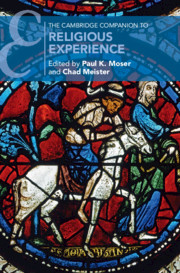Book contents
- The Cambridge Companion to Religious Experience
- Cambridge Companions to Religion
- The Cambridge Companion to Religious Experience
- Copyright page
- Contents
- Figures
- Contributors
- Preface
- Introduction
- Part I Characterizing Religious Experience
- 1 Psychology of Religion Approaches to the Study of Religious Experience
- 2 Philosophy of Religion Approaches to the Study of Religious Experience
- 3 Theology, Religious Diversity, and Religious Experience
- Part II Religious Experience in Traditional Monotheism
- Part III Religious Experience Outside Traditional Monotheism
- Part IV Prominent Themes and Challenges
- Index
- Cambridge Companions to Religion
- References
1 - Psychology of Religion Approaches to the Study of Religious Experience
from Part I - Characterizing Religious Experience
Published online by Cambridge University Press: 20 June 2020
- The Cambridge Companion to Religious Experience
- Cambridge Companions to Religion
- The Cambridge Companion to Religious Experience
- Copyright page
- Contents
- Figures
- Contributors
- Preface
- Introduction
- Part I Characterizing Religious Experience
- 1 Psychology of Religion Approaches to the Study of Religious Experience
- 2 Philosophy of Religion Approaches to the Study of Religious Experience
- 3 Theology, Religious Diversity, and Religious Experience
- Part II Religious Experience in Traditional Monotheism
- Part III Religious Experience Outside Traditional Monotheism
- Part IV Prominent Themes and Challenges
- Index
- Cambridge Companions to Religion
- References
Summary
Taves examines some approaches from the psychology of religion to religious experience, focusing on the psychology of religion as represented by researchers associated with the International Association for the Psychology of Religion and the American Psychological Association’s Division 36. She suggests that psychology of religion can treat its subject matter of religious experience as an object in its own right or as something related to another important state, such as depression.
- Type
- Chapter
- Information
- The Cambridge Companion to Religious Experience , pp. 25 - 54Publisher: Cambridge University PressPrint publication year: 2020
References
- 2
- Cited by



